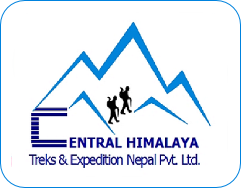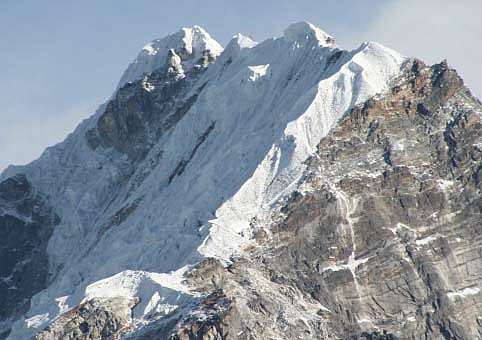

Day 1: Arrival in Kathmandu and transfer to Hotel
Day 2: Visit of Kathmandu and Patan
Day 3: Kathmandu - Lukla - Phakding (2820 m):
Flight from Kathmandu to Lukla early in the morning and then a descent to Ghat and Chaurikharka, then an easy climb along the river to Dudhosi Phakding: 3 hours Of walking.
Day 4: Phakding - Namche Bazaar (3445m):
An easy climb up Jorsalle crossing several times Dudhkosi River to Namche Bazaar, place known for its commercial activities where the Sherpas have specialized shops for hikers. The city also features many restaurants, cyber cafe, bank, ATM, post office, monastery and a traditional market every Saturday. 6 hours of walking
Day 5: Namche Bazzar:
Rest day to acclimatize to the altitude, possibility of visits (monastery view of Everest ...) and / or shopping
Day 6: Namche - Tyangboche (3860 m):
gradual ascent with views Thamserku, Kyangtega, Amadablam and other Kyanjuma up partly in the forest. We cross the river at Phungithanga (3250 m), a shopping place for hikers. Then a steep climb for 2 hours to Tyangboche, a place well known to hikers for its important monastery on the historical level and by the reputation of its Lamas. There is a magnificent view of the summits of Amadablam, Lhotse, Nuptse, Kyantega and Mount Everest. 5 hours of walking.
Day 7: Tangboche to Dingboche Dingboche:
An easy descent through a white rhododendron forest where you can see mountain birds such as pheasant or Impeyan blood. We arrive at the Dudkhosi river where there is still a traditional suspension bridge. Go up to Pangboche (3930 m) where you can visit the monastery (presence of a head and a hand of the yeti). We continue through a forest of birches and a meadow until Dingboche. 5 1/2 hours of walking.
Day 8: Dingboche - Chhokung:
The gradual increase continues on the east side of the Chhukung-ri valley with views of Amadablam, Iceland peak, Lhotse and other peaks. 3 hours of walking.
Day 9: Chhokung - Chhokng -ri (5600m) - Dingboche:
We will go to Chhukung-ri early morning for acclimatization, panoramic views of Lhotse, Amadablam, Baruntse, Makalu and other peaks. Descent to Chhokng then Dingboche to spend the night. 7 hours of walking.
Day 10: Dingboche - Labuche (4910 m):
Ascent little steep through a wide, wet valley where you can see yaks loose in the meadow. We have a superb view of the Abi Himal and Cholatse on the left. The climb is rather easy up to Dughla and then much steeper for an hour to arrive at several chortens where are written the names of the mountaineers who died during the ascent of the summits of the region. Then an easy walk along a stream to Labuche: a village specially built for hikers. 6 hours of walking.
Day 11: Labuche - Kalapatthar (5575 m) - Gorakshep (5100 m):
We continue on the right bank of the river and then walk on the glacier until Gorakshep. Then a steep climb to the left to reach Kalapatthar where we will enjoy a panoramic view of Mount Everest, Lothse, Nuptse, Pomori, Khumbutse and other peaks. We will then return to Gorakshep. 7 hours of walking.
Day 12: Gorakshep - Base Camp Labuche:
Descent by the same route to where we will Labuche northern slight rise in valley and into a small valley. 4 hours of walking.
Day 13: Base Camp - Camp altitude:
Walk through the glacier and then a steep climb to the base camp. 3 hours of walking.
Day 14: Camp altitude - Summet - Base Camp:
Depart early morning using all the facilities for the rise of the ridge where the snow is often overhanging. A panoramic view of Mt. Everest, Pumori, Abi Himal, and Amadablam, Thamserku, Makalu to the south. Return to base camp. 12 hours of walking.
Day 15: Base camp - Phortse (3800 m)
Descent from the Cross, an easy walk through the meadow until Panboche, taking the small path to the right of the valley. View of the Kangtega and the monastery of Tyangboche. Continuation to Phortse: a place known for observing wildlife. 6 hours of walking.
Day 16: Phortse - Khumjung 3780 m):
A descent to Phortsethanga where it joins the trail from Gokyo. The climb is steep after crossing the river to Mongla, then an easy descent through Kyangjuma to Khumjung.
Day 17: Khumjung - Phakding:
A short climb up to the edge of Syangboche, down to Namche and along the same path to Phakding.
Day 18: Phakding: Lukla:
We left the national park, an easy walk to Thadokoshi through the village of Ghat then a slight rise by Chaurikharka to Lukla. 5 hours of walking.
Day 19: Lukla - Kathmandu : Return flight to Kathmandu from Lukla.
Day 20: Visit of Bhaktapur (an ancient city of Kathmandu)
Day 21: Departure to your destination.



